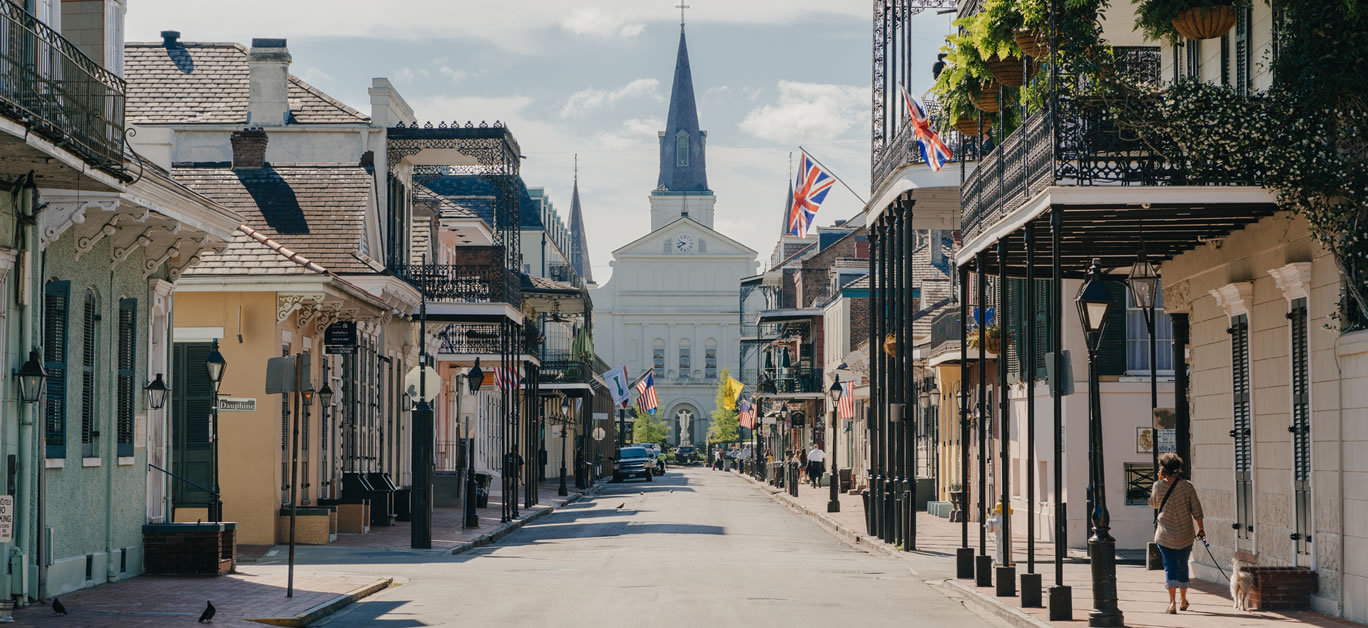Leading travel writer Louise Gillespie vists New Orleans, an iconic Louisiana city on the Mississippi River, near the Gulf of Mexico.
The area
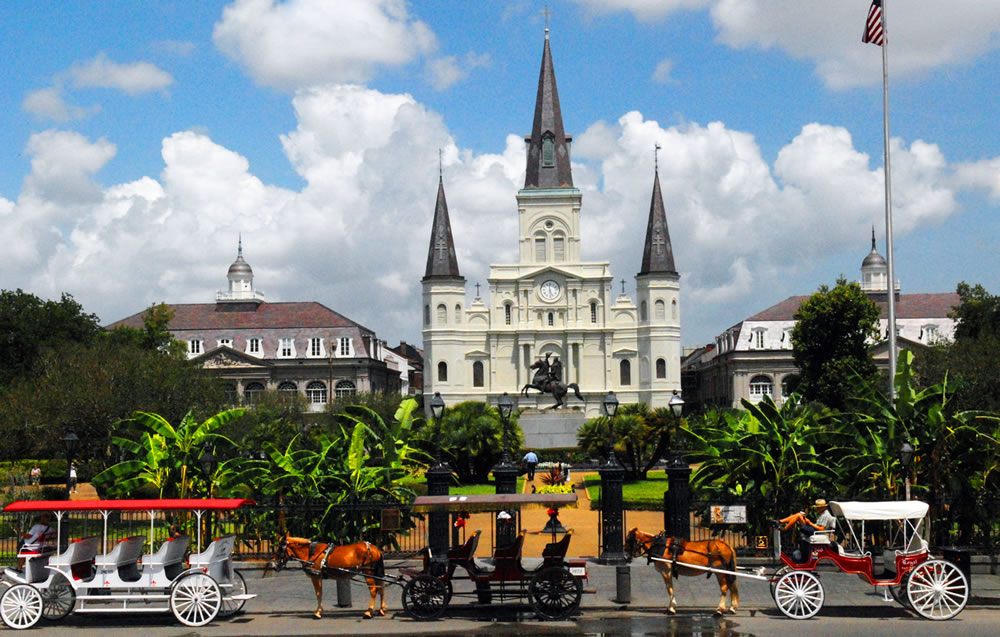
New Orleans is most famous for Mardi Gras, a two-week festival that transforms the already vibrant city into an urban crescendo of sound and colour.
However, whilst Mardi Gras is certainly a bucket list experience, New Orleans is best visited outside of this mayhem; instead visit in spring when the street corners are filled with soulful jazz, you awake to the sound of a trumpet softly playing the notes of Louis Armstrong and you won’t struggle to find a seat in the best restaurants and bars.
In spring, the winds blow across the Mississippi stirring the leaves of the old plantation oaks and creating the perfect temperature for exploring a city with a history as rich as its food.
Where to stay
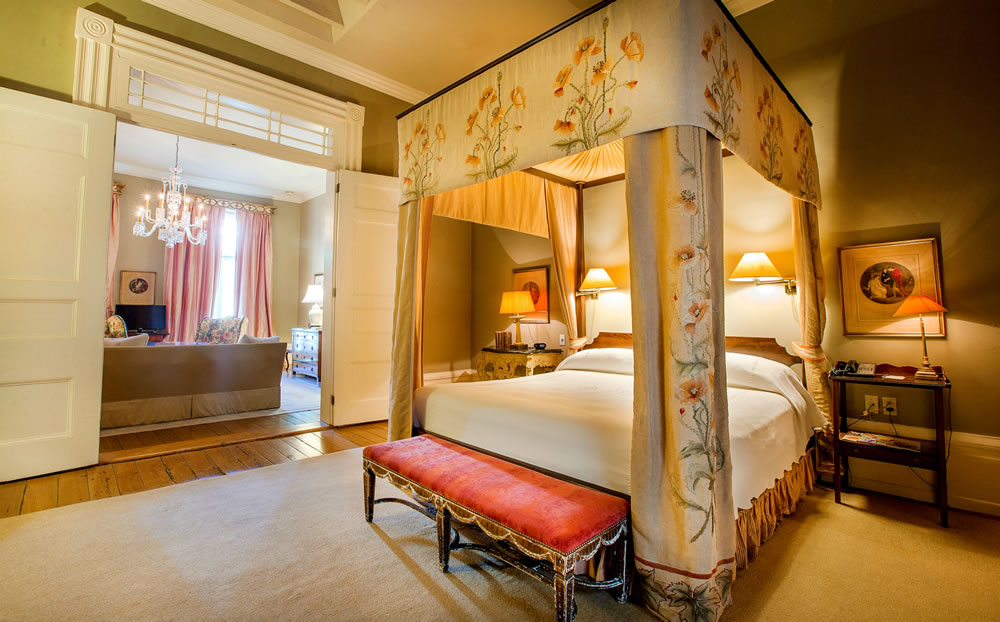
The New Orleans French Quarter is famous throughout the globe and for good reason given its incredible architecture, original wrought iron balconies, colourful properties and hidden courtyards. Arguably, unless you are in the heart of the French Quarter you aren’t really in the heart of New Orleans where the original plantation owners built their houses for entertaining.
The Soniat House Hotel is located on Chartres Street, one that’s filled with art galleries and antique shops, and offers the perfect quiet southern calm that is much needed after a day in the city.
Built in the 1800’s, this thirty-bedroom hotel consists of two former houses on one side of the street and another equally charming property just across the road. Soniat House Hotel welcomes guests into a leafy private courtyard which provides a welcome respite from the heat of the city.
Take one of the hotel’s suites and find yourself whisked upstairs to an expansive room with a stunning private balcony complete with white wicker chairs overlooking the street below.
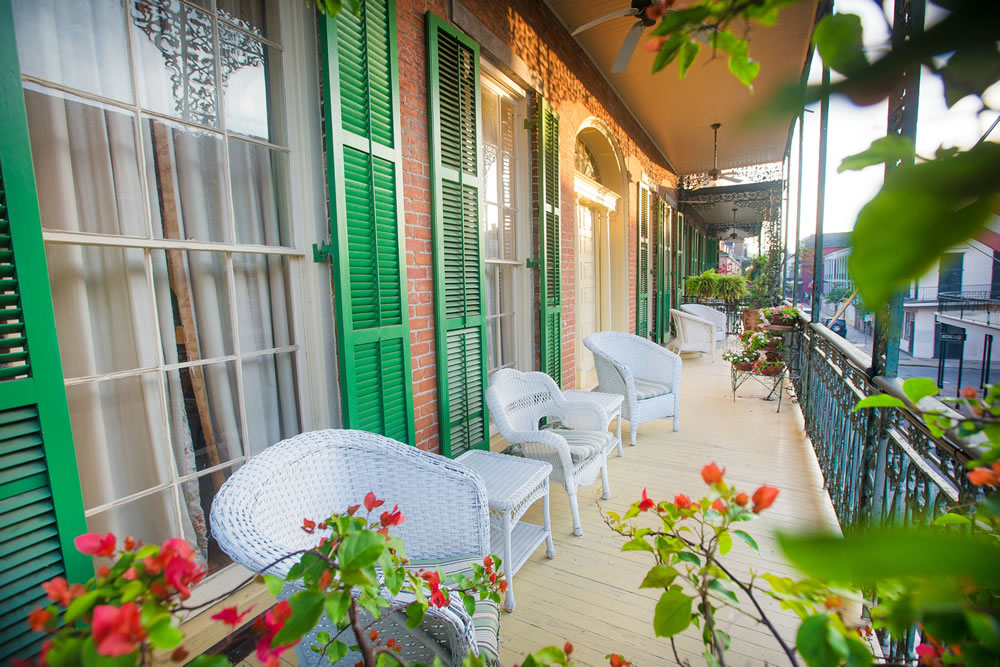
Whilst some French Quarter hotels are in the midst of the hustle and bustle, Soniat House is the perfect distance from the city buzz whilst being just a few steps from the heart of the action, ensuring every guest can enjoy have a peaceful night’s sleep.
The hotel doesn’t feel like a typically American one, instead it reflects the heritage of the city with a combination of French, Italian and African-American influences to create a unique property that’s brimming with character.
The hotel’s owners are antique aficionados and it shows in every detail; gorgeous four poster beds, mahogany writing tables, ornate chaise longues and beautiful silk foot stools create a wonderful ambience of historic elegance.
Where to drink
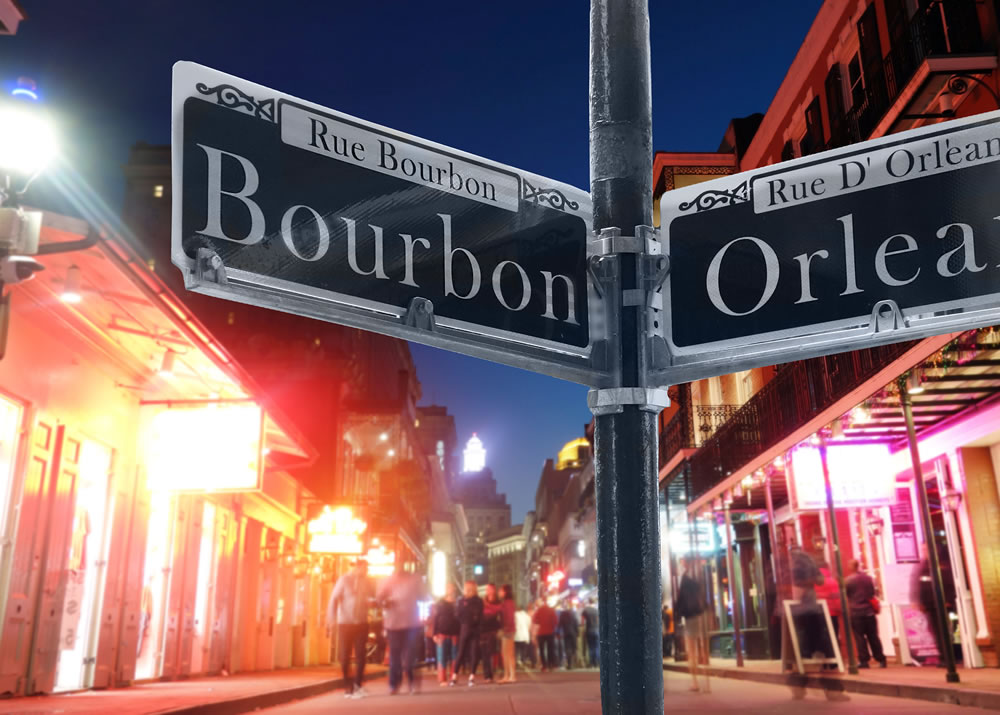
In New Orleans a drink isn’t really a drink unless it’s accompanied by jazz, and bars should be chosen by the sound they emit not the aesthetic of the interior. If it’s a warm sunny day there is not better spot to enjoy a delicious combination of frozen mango with Southern Comfort than the leafy courtyard of the aptly named Musical Legends Park.
Muriel’s is another great spot for an al fresco drink on the wrap-around balcony overlooking the street performers of Jackson Square. Whilst Bourbon Street is a novelty and a bit of a tick list place to explore, when visiting New Orleans, it is certainly not the street for the best music or drinks. Instead, when the sun goes down head to the iconic Jazz Play House for great cocktails and even better jazz. Reserve a VIP table at the front and enjoy the atmosphere of low lighting and heavy bourbon cocktails combined with the soulful notes and husky voices of the some of the best jazz in town.
New Orleans is a city that never sleeps and with music played on every corner and art to be found everywhere you turn, often the best way to see the city is to take a drink from a bar and walk around the city until you find your next spot.
Back at Soniat House, the hotel’s honesty bar provides the perfect aperitif to be enjoyed on a balmy evening on the balcony.
Where to eat
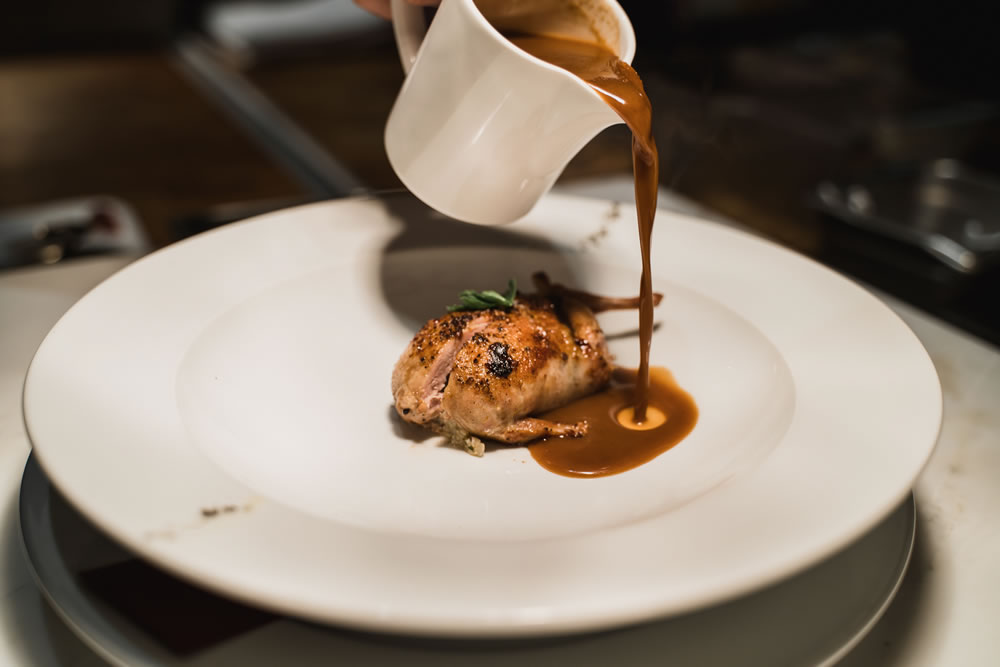
New Orleans is famous for its food which celebrates the fascinating history of the area. Creole cuisine of gumbo, jambalaya, crawfish tails, catfish and shrimp can be found in pretty much every restaurant, but for those who want a different take on a Creole classic there are a few excellent restaurants to be found.
Death by Gumbo, a combination of quail, andouille and oysters, is the creation of chef John Folse at R’evolution, a fine dining spot in the heart of the French Quarter that celebrates Italian and Creole cuisine with delicious pastas and rich sauces.
Seafood is the mainstay of New Orleans menus, and Pêche located just outside the French Quarter is where locals in the know go to dine. With a spectacular raw bar and dishes that use the freshest local catch, daily specials such as grilled redfish with salsa verde or fried speckled trout are the reason why this restaurant is always full to the rafters.
For those seeking an iconic New Orleans culinary institution they need look no further than Broussards which this year celebrates 100 years of serving exceptional food. With seasonal centennial menus that champion local produce; the blue crab ravigote, Creole turtle soup and gulf shrimp linguine are just some of the dishes that celebrate a century of culinary success. If you can tear your eyes away from the food, the beautiful high ceilings and chandeliers of Broussards make it one of the city’s most beautiful restaurants.
Factbox
Soniat House Hotel
Rooms can be booked from $245
Address: 1133 Chartres St, New Orleans, LA 70116
Phone: 001 504 522 0570
Website: soniathouse.com
Image credit at the very top of the article: Paul Broussard












